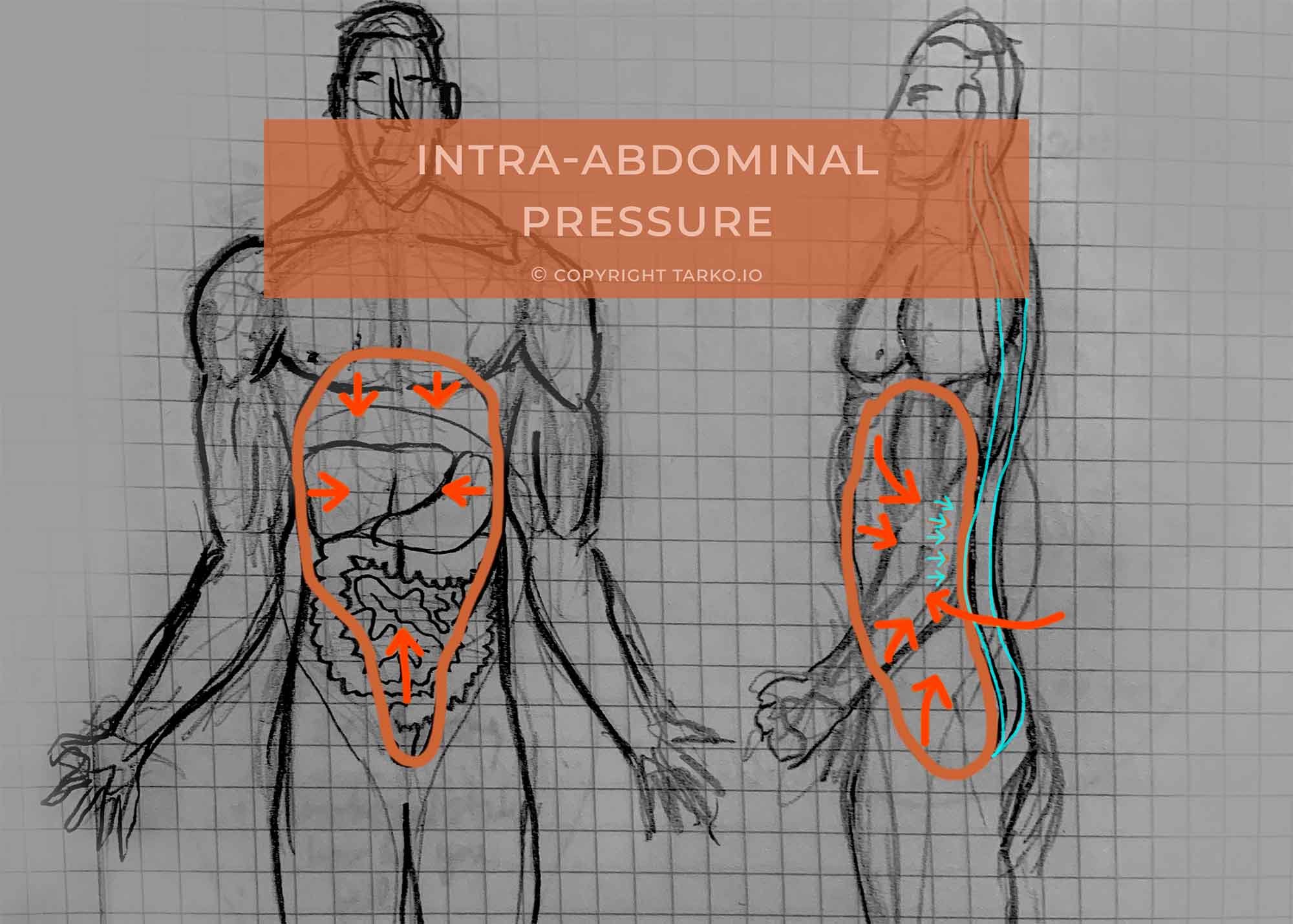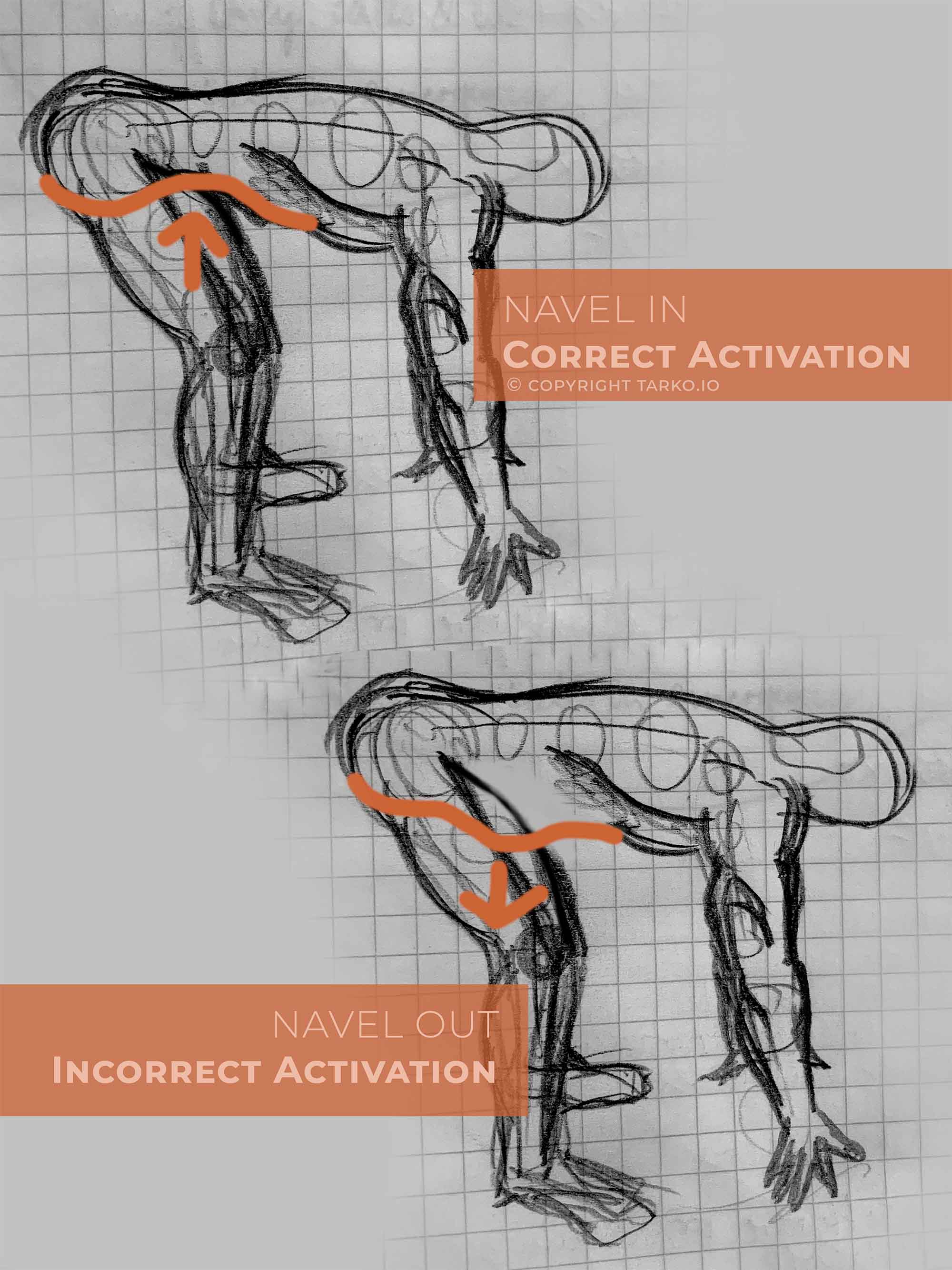A functional Inner Core solves Lots of Problems
The secret to a pain-free back and a truly functional core (which does contribute to a flatter tummy) lies deeper than those superficial six-pack muscles. It's about your inner core. The muscles in there are your body's natural corset, providing true stability, sexiness and support.

Still battling that nagging back pain while those crunches haven't really flattened out your belly? You're not alone. It's a frustrating cycle, and the truth is, you might be focusing on the wrong things.
There is vanity goals. They can look superficial. As soon as you level up, it becomes way more than just wanting to have a Sixpack: You started doing fitness for the sake of looking fit. Over the years, your incentives changed. You wanted to go to the gym because of the inherent qualities that being disciplined brings.
Just wanting to have a sixpack seems like a superficial goal, but it is a surface level metric that points to a deeper desire to have a healthy core. A healthy gut and functional core musculature is key to this.
The secret to a pain-free back and a truly functional core (which does contribute to a flatter tummy) lies deeper than those superficial six-pack muscles. It's about your inner core – the unsung heroes like your transversus abdominis, diaphragm, and pelvic floor. These muscles are your body's natural corset, providing true stability and support.
Why Traditional Abs Workouts Often Fail
Think of it like this: endless bicep curls won't fix a broken shoulder. Similarly, traditional core work often misses the foundational stability provided by the inner core. A weak inner core is like a wobbly foundation, leaving your back vulnerable and hindering your progress.
Your abdominal wall isn't just there for aesthetics; it plays a critical role in spinal stability. When these muscles, especially the deep transversus abdominis, contract, they increase intra-abdominal pressure. Imagine squeezing a tube of toothpaste – the pressure inside increases, providing support from within. This internal pressure acts like a natural weightlifting belt, reducing the load on your lumbar spine. A weak or inactive abdominal wall leaves your back vulnerable and unsupported.

A Simple Inner Core Test
Here's a quick check to see if your inner core fires properly: Place a finger on your belly button and hinge forward [45 degrees] as if picking up something light. You should feel a gentle inward draw of your belly button.
This subtle inward movement indicates the automatic activation of your transversus abdominis, your deep inner core muscle, kicking in to stabilize your spine. If you don't feel this gentle drawing in, it suggests your inner core isn't engaging as it should.
No inward movement? Your inner core is not firing. Your inner core is not providing intended stability to your lumbar spine. Your inner core needs some attention.

Without this inner core firing, your lumbar spine is significantly more exposed to injury. Paul Chek also calls this a “naked spine”.
Core Amnesia
"Core Amnesia," that sneaky disconnect between your brain and your midsection's powerhouse, doesn't just happen because you've been glued to a chair (though that's a major contributor, making your core muscles softer than a marshmallow and just as forgetful). Oh no, it goes deeper.
What Makes Your Core Go "Huh? I don’t know when to act."
- The Gut: That persistent bloat and gut irritation? It's not just about uncomfortable pants. Chronic inflammation in your gut can actually send a "stay offline" signal to your abdominal muscles, weakening their ability to engage and protect your back. It's like your body's so busy dealing with the internal ruckus that the core gets put on the back burner.
- Sitting & Dying on Your Coach: That round back while sitting that you've perfected? It's a silent assassin of your core strength. Poor posture isn't just about looking less than regal; it throws your entire musculoskeletal system out of whack. Your core muscles get lazy, other muscles overcompensate (hello, tight neck and shoulders!), and your back screams in protest.
- The Injury Trauma: An old back injury or surgery can leave behind more than just a scar. It can disrupt the vital communication pathways between your brain and your core, making it harder for those deep stabilizers to wake up and do their job.
- The Stress Straitjacket: That constant tension you carry? It's not just in your shoulders. Chronic stress can tighten your muscles in ways you don't even realize, inhibiting the natural, fluid engagement of your core. It's like trying to fire an engine with the parking brake on.
So, forget the idea that a strong core is just about endless sit-ups. It's a much more nuanced picture. In fact, doing sit-ups can even further destroy your posture. And I will talk about this in length in my little course on the topic of ditching back pain & getting a flat belly.
Reawakening your "sleepy" core requires a holistic approach: reconnecting that brain-body link, sure, but also untangling the problems within your gut and unwinding the postural pitfalls.
It's about treating your body as the interconnected masterpiece it is.
Time to stop chasing that six-pack with exercises that are as effective as shouting at a brick wall. Let's wake up your inner powerhouse and build a core that not only looks good but feels incredible, from the inside out.
If you want a full course with video tutorials & in-depth anatomic explanations, like this post and I will make sure to publish such a product.
Your's truly and fully alive,
kiss kiss,
Tarkan





